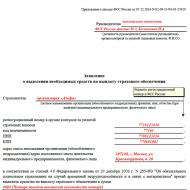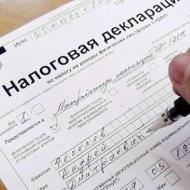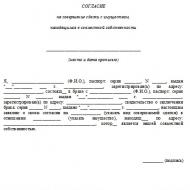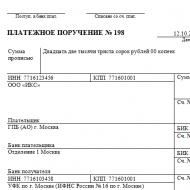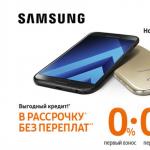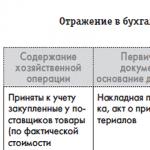
Which bank card is better to choose? Additional features of bank cards
Updated: 2019-3-13
Oleg Lazhechnikov
62You know that from time to time I get interested in bank cards, cashbacks and conversion rates. As a result of my research, I wrote a post in which I told what cards I have and which ones can be made. Of course, the list is incomplete, there are many more cards, but based on personal experience, besides, I update it because I keep an eye on the tariffs.
Recently, questions about Alfabank cards have become more frequent, and the matter with them is murky. Therefore, I asked Alfabank technical support about commissions, made myself Alfabank cards, and checked everything in practice. But in order not to write only about Alfabank alone, I conducted an experiment with all my cards at once.
I recommend the AllAirlines card from Tinkoff with 10% cashback on hotels, 3-5% on tickets and 2% on all purchases. Read my post. I’ve been using it for over a year now, and it’s very beneficial.
The fact is that when making purchases abroad using Alfabank cards, there is a 2.5% commission, which is rarely advertised, and it does not always arise. They wrote to me several times in the comments that there were no commissions. But in order to say this for sure, you need to know all the nuances. Before describing the results of my experiment, I offer you the answer from Alfabank technical support, which says in black and white about the commission of 2.5%. I quote.
In accordance with the Bank's Tariffs, for cash withdrawal through third-party ATMs (except for partner banks) a commission of 1% of the amount including the commission is charged third party bank, but not less than 180 rubles. for the Optimum Service Package. We recommend checking the availability and size of a third-party bank’s commission by contacting its support service.
We would like to note that when performing a transaction in a currency different from the currency of the account for which the card was issued, using which the corresponding transaction was made, the Bank makes a conversion into the account currency in the manner and under the conditions provided for in Appendix 4 - “ General terms on the issue, maintenance and use of cards" of the Agreement.
There are always three currencies involved in the conversion process: the transaction currency, the billing currency, and the card account currency.
Transaction currency– the currency in which the transaction is made using a bank card (cash withdrawal, payment at a point of sale or transfer from card to card).
Billing currency– the currency in which the international payment system calculates the amount to be debited from the cardholder’s account. Billing currency for VISA and MasterCard payment system cards when making transactions in foreign currency abroad are US dollars.
Account currency– the currency in which the account is opened, to which the card used to make the transaction is “linked”.
If the currency of the Client’s account differs from the transaction currency and the billing currency, the conversion will be carried out according to the rules and rate of the payment system (MPS) from the transaction currency to the billing currency, and at the Bank’s rate from the billing currency to the account currency. In accordance with the MPS rules, the Bank has the right to apply adjustment factors to the base MPS rate. For Alfa-Bank cards, the coefficient is 2.5% (except for VISA Infinite and MasterCard World Signia/MasterCard World Elite, for which conversion occurs without applying a correction factor). This information is recorded in the documents regulating mutual settlements between the Ministry of Railways and the Bank, and can be changed. Thus, conversion from the transaction currency to the billing currency occurs at the rate established in accordance with the rules of the Ministry of Railways, which allow correction factors to be applied to the base rate. The MPS rate can be found on the MPS website. This course is for informational purposes only, since at the time of the operation the rate may be one, and at the time of authorization of the operation - another. When converting from billing currency to account currency, the Alfa-Bank rate is applied, which the Bank has the right to set at its discretion.
At the same time, the following rule applies in Alfa-Bank: if the currency of the transaction coincides with the currency of the Client’s account, then the amount debited from the Client’s account will be equal to the amount of the transaction.
Just in case, I’ll summarize the entire response from technical support. If you withdraw dollars from a dollar card, or from a euro card, there will be no 2.5% commission. If you withdraw baht, shekels, zlotys and other tugriks from currency cards, or withdraw something from ruble cards, there will be a commission of 2.5%, with the exception of holders of VISA Infinite or MasterCard World Signia/Elite cards.
Which of the 6 bank cards is more profitable?
As I said above, I decided to conduct an experiment with all the cards that I have with me: Tinkoff ruble and dollar, Kukuruza with interest on the balance, Sberbank Mastercard, Alfa ruble and dollar. Withdrew the same amount from the same ATM 1000 shekels, at the same time April 10, 2017 within a few minutes of each other.
Let me remind you that there were 2 conversions for ruble cards (ILS=>USD=>RUB): the first (ILS=>USD) is carried out by the Mastercard or Visa payment system, the second (USD=>RUB) is carried out Russian bank. For dollar cards there was only 1 conversion (ILS=>USD), which is carried out by the payment system, and the exchange rate Russian bank in this case is not involved, but nevertheless he can add his commission. For Thai baht there would be absolutely the same scheme.
You also need to understand that even though the authorization of funds (withdrawal from an ATM) was at one time, the actual debiting occurs 2-5 days later and at the exchange rate on the day of debiting. Accordingly, the conversion rates and the final amounts (which we compare) differ because of this too (the rates change at least once a day). I’ll tell you separately about dollar cards - it’s important at what rate the dollars were purchased, if you compare what is more profitable than a ruble or dollar card (I talked about this once). For example, you can buy them in advance at one of the exchange rate drops, in the Internet bank immediately before withdrawing from an ATM, or at an exchanger on an arbitrary day.
| Authorization | Write-off | Withdrawal fee | Total withdrawn | Note | |
|---|---|---|---|---|---|
| Corn Mastercard World | 16381,29 | 15500,43 | 0 | 15500,43 | Write-off in 3.5 days. There is a bug in the information security system and the commission is displayed. After decommissioning, this line should disappear, but the bug has not yet been fixed. When the “Interest on Balance” service is activated, up to 50 thousand rubles per month can be withdrawn from ATMs without commission, then 1%. |
| Tinkoff Black ruble | 15559,11 | 15801,15 | 0 | 15801,15 | Write-off in 3 days. There is no commission for withdrawals from ATMs up to 150 thousand rubles/month. |
| Sberbank Mastercard ruble | 16072,64 | 15839,48 | 158,39 | 15997,87 | Write-off in 3 days. The fee for ATM withdrawals (1%) is not displayed anywhere in the IB, although it is debited immediately. You can see it only in the full statement in the information bank, after about 5 days, not everyone knows this. |
| Alfabank ruble | 16293,33 | 15899,47 | 180 | 16079,47 | |
| Tinkoff Black dollar | $276,33 | $273,85 | 0 | $273,85 | Write-off in 3 days. There is no fee for ATM withdrawals up to $5,000/month. |
| Alfabank dollar | $284,08 | $280,70 | 3,18 | $283,88 | Write-off in 4.5 days. The fee for withdrawals from an ATM (1%) is displayed in the IB as a separate line. |
conclusions
On the banking forum, they most often advise for rubles, and for currency, if we are talking about travel. And this, in principle, coincides with my advice, as well as with the results of the experiment. Although I'm more for currency card(more profitable) and with 2-10% cashback (follow the link for free service).
First of all, this experiment may be useful to those for whom the phrase “on the XXX card as much as 4% commission” means nothing, and who do not want to understand all these courses. Agree, when you give specific amounts, especially in comparison, it is clearer than some percentages. After all, in fact, the difference between the cards when withdrawing is only a few hundred rubles. Not everyone wants to go to the trouble of making a little more special profitable cards because of such a difference, especially if there are only one or two trips a year.
Another thing is for those who like to count money, or who use cards abroad throughout the year. You see, it’s much more pleasant not to give the bank a commission, but to receive cashbacks back from it. And the more you spend per year, the greater the difference. For example, I save on annual maintenance, conversion fees, and cashback, say, 15 thousand rubles per year. Is this a lot or a little? If we consider this to be work, then it’s not enough, if we consider the money out of nowhere that I get by poking around in a topic that I like, then it’s very nice bonus. It is necessary to take into account that I figured out the issue and made maps a couple of years ago, that is, I have not spent days and nights reading forums for a long time, no. Also, if you take the amount not 15 thousand rubles, but for example 150 thousand rubles, the 200 rubles difference already turns into 2000 rubles. Well, and so on, you can multiply it yourself (for 1.5 million rubles there will be a difference of 20,000 rubles).
Therefore, I recommend that everyone approach the choice of bank cards carefully. If you don’t really need a bonus, then it’s easier not to bother yourself and make almost any card. If you want to get everything from the bank, you will have to read the tariffs and choose something specifically for yourself.
P.S. Questions? :)
Life hack 1 - how to buy good insurance
It’s incredibly difficult to choose insurance now, so I’m compiling a rating to help all travelers. To do this, I constantly monitor forums and study insurance contracts I also use insurance myself.
Life hack 2 - how to find a hotel 20% cheaper
Thanks for reading
4,78
out of 5 (ratings: 69)
Comments (62)
- By owner of funds in the account– debit, credit, with overdraft, prepaid;
- By area of use– local, international, intrabank, virtual;
- By payment system – Visa, MasterCard, Gold Crown, American Express, etc.
- By level of customer loyalty and volume of services– electronic, standard, gold, platinum, etc.
- By data storage method– chip, with magnetic tape, combined.
- Such a card can be “linked” to salary account, deposit account“on demand”, deposit account with the possibility partial withdrawal funds, accrued interest account;
- A debit card can be issued for a teenager from 14 to 18 years old (with parental consent); for children from 6 to 14 years old, it is possible to issue an additional card to the parent card with restrictions on transactions on it. Persons over 18 years of age have the right to issue debit cards independently.
- An application for issuing a debit card is processed as quickly as possible (a few minutes), as it does not require additional permissions or checks. The issuance of the card itself, depending on its type and region, can be instant or take several weeks.
- To issue a debit card, you only need a passport and the personal presence of the client, no additional documents are required;
- As a rule, there are no upper or lower balance limits for debit cards - the client can either reset the account to zero or place unlimited amounts on it;
- Funds in card accounts are protected by a deposit insurance system (with maximum amount compensation of 1.4 million rubles);
- A certain small percentage may be charged on the balance (usually the average monthly amount in the account is considered);
- With a debit card you can pay in cash and non-cash: make payments on the Internet and through an online account, withdraw money from ATMs, pay for goods and services at terminals.
- The credit limit is not open to everyone - banks have a certain list of requirements for the client (age, credit history, financial situation, work experience, etc.);
- The main requirement when opening a limit is stable income to the card account. That is why overdrafts are most often offered for salary and pension cards. Compliance with this requirement “overrides” the violation of others - for example, the client may not have the required length of service, but the bank will offer him an overdraft.
- In order for an overdraft to be opened, the card must be valid for several months (usually six months or more) - this way the bank will be able to track the frequency of receipts;
- Overdraft limits vary depending on the bank and card type. It can be either 30-50% of the average monthly income or 5-6 salaries;
- No documents are required to open an overdraft - all necessary documents are provided upon initial account opening. As a rule, it is enough to sign an overdraft agreement on the terms offered by the bank;
- Overdrafts can hardly be called profitable - banks open them at quite high interest(25-30% per annum). In addition, in many cases there is an overdraft fee;
- To use the limit, it is enough to withdraw an amount greater than the account balance - without additional requests to the bank;
- Overdraft repayment occurs automatically - when funds are received in the account, the bank writes them off against the loan.
- To issue plastic, it is necessary to open a loan account, which means applying for a bank loan;
- The credit card limit is the amount of the loan provided by the bank;
- Registration of a card takes from several hours to a week, depending on the speed of processing loan application and its limit;
- To issue a card, you need the client’s passport, proof of income, place of work - that is, everything that is needed to issue a regular consumer loan;
- Credit cards are issued only to persons over 18 years of age who are in permanent employment;
- Card rates can be quite high - up to 40-50% per annum. This is a fee for the “revolvability” of the plastic – that is, the ability to repeatedly use the limit;
- Many credit cards require and debit limit– and in the absence of fees for cash withdrawals, they can be very profitable for the client. As a rule, the remainder own funds On credit cards, banks charge interest based on the type of deposit, and the rate can be good.
- They are issued as a non-personal debit card - that is, they are issued instantly, at the moment of concluding the agreement
- This is a bearer card, that is, any owner can pay with it, regardless of who purchased the card;
- It has a certain limited limit and does not involve opening an overdraft or replenishing an account (in the latter case there are exceptions);
- As a rule, unsuitable for online payments;
- You can withdraw cash from the card or use it to pay at store terminals.
- Intra-bank - that is, those that can be cashed only at the issuer’s ATMs. Such, for example, are the cards that some banks issue for cashing out a consumer loan.
- Local – cards that can be used only in a limited area (for example, in the country where it is issued). Thus, in Russia there are several local payment systems, with which exclusively local banks cooperate.
- International cards belong to major payment systems, and they can be cashed in any country in the world. These cards are useful for travelers - they can be linked to a multi-currency account and make payments in one of several currencies;
- Virtual cards are needed for payments on the Internet. They don't exist in physical form, they cannot be used at an ATM or offline store. At the same time virtual card is an excellent payment tool for non-cash payments, online shopping.
- The card is issued in the premium categories MasterCard, VISA or MIR Premium.
- You can issue a ruble or currency card (euro, dollar).
- Cash withdrawals from ATMs and transfers to other banks are free.
- Free issuance of up to 5 additional cards for all family members or for yourself. Moreover, you can issue different payment systems for one account. For example, for domestic payments you can issue premium card WORLD, and for payments abroad MasterCard Platinum.
- Online registration and free delivery by a bank specialist.
- Interest on the card balance is up to 6 percent per annum.
- Cashback for purchases in certain categories up to 5%, as well as for purchases from partners Tinkoff Bank up to 30%.
- The Tinkoff Black card will be free if you have a bank deposit (deposit) in the amount of 50 thousand rubles or more or a loan for the same amount in Tinkoff Bank.
- Another way to use it for free is to keep a minimum balance of 30 thousand rubles on the card for a month.
- Well, the most popular way is after receiving the card, just call or write to the bank with a request to transfer to non-public tariff 6.2 in which there is no card maintenance fee. Only existing bank clients are transferred to it. You can familiarize yourself with this tariff.
- Large reliable bank TOP 10.
- Cashback on everything up to 6%. No need to search certain categories or shops. Pay with it everywhere and get a stable 6 percent cashback!
- Commission-free withdrawals from ATMs and transfers to other banks.
- A savings account where you can store money favorable interest rate up to 7% per annum.
- Possibility to issue a premium card with free service (if minimum requirements are met).
- Free delivery at any time and place convenient for you.
Anna
Nikolay
Dana
Dmitriy
Dmitriy
Dmitriy
Anastasia
Anastasia
Dmitriy
Maria
Maria
Sergey
Victoria
Elena
Most Russians are issued plastic cards at work or when paying scholarships and pensions, so they are deprived of the opportunity to choose a card. But if you independently determine for yourself best option, it is necessary to take into account a whole range of criteria. When choosing bank cards, you should pay attention to the following characteristics: type of card (debit), payment system (Visa and MasterCard), class of service and additional options.
Selecting card type: debit or credit card
Debit cards allow you to use only your own funds, while credit cards allow you to borrow money from the bank and go into the red. Debit cards are more suitable for those who do not accept bank loans, has low financial discipline and is prone to spontaneous spending.
The most important criteria for choosing credit cards: annual interest rate, the size of the credit limit, as well as the presence of a grace period during which you can use borrowed money for free.You should opt for a credit card if you periodically feel the need for borrowed money Oh.
Comparing various options plastic cards, it is worth paying attention to additional benefits, among which:
Availability of options for remote account management - Internet banking and mobile banking, this will allow you to perform all operations without visiting a bank branch;
Accrual of interest on the balance or the ability to connect online deposits, which will allow you not only to spend, but also to earn on the card;
Availability of cash-back - with these cards, part of the purchases is returned back to the card account; for example, with a Master Card from Svyaznoy Bank, 10% is added to the balance, 1% is returned in bonuses;
Availability of 3D-Secure technology, which makes card payments more secure.
Also today, everyone can choose a card with an additional set of benefits based on their needs - for example, a card with discounts and bonuses for travel enthusiasts, for motorists, for users of certain telecom operators, etc. With airline co-branded cards when paying for any goods and services to the client Miles are awarded and can be exchanged for free airline tickets or upgrades.
Choice of payment system: Visa or MasterCard
The choice of payment system is relevant only for actively traveling Russians and who intend to pay abroad using bank cards.
If you plan to use the card only in the Russian Federation, then there is no difference between Visa or MasterCard.
IN in this case It is worth considering that the currency of the Visa payment system is the dollar, and that of MasterCard is the euro. Thus, it is more profitable to pay with a Visa card in the USA, MasterCard - in Europe. So, when paying with a Visa card in Europe, it initially converts rubles, and then into euros, which is quite unprofitable.
Selecting a bank card class
Finally, it is worth deciding on the class of service. There are three classes of bank cards: electronic, classic and premium.
Electronic cards (Visa Electron and MasterCard Maestro) are distinguished by a basic set of services, minimal cost annual maintenance(about 300 rubles per year). Such cards are suitable for those who use it to withdraw cash and make purchases at retail outlets. However, you won’t be able to pay with them online. Such cards are often issued as unnamed cards.
Classic cards ( Visa Classic And MasterCard Standard) - the most common types of cards with a basic set of functions. They allow you to make payments and pay for purchases using cashless payments. This map often comes with a chip, which allows it to be used when making purchases abroad.
Premium Gold cards and Premium - status, with an additional set of privileges, such as discount programs. Among the disadvantages of such cards is the high cost of maintenance.
For those who often make purchases online, you can also order virtual cards without physical media.
A lot has been said and written about bank cards, but we still see how clients are confused debit cards with credit cards, are prejudiced against prepaid “plastic” and have absolutely no idea why virtual cards are needed. Our material today is addressed to those who want to once and for all sort out the types of bank cards and understand which one is intended for what.
In order to talk about the types of bank cards, let’s first define what they are. Many plastic holders mistakenly believe that card and bank account are the same thing. This leads to many common misconceptions - for example, that the loss of a card leads to the loss of funds on it. However, this is not at all true.
In essence, a bank card is just a payment instrument. By itself, it represents a piece of plastic, and is only “linked” to what the client has bank account makes it possible to manage your money using a card. Of course, the loss, blocking or damage of a card does not in any way affect the status of the account (of course, if it, along with other data, does not fall into the hands of fraudsters who can cash out your money).
Almost any of them can be linked to the same account. existing species cards - everything depends only on the tariffs and capabilities of the bank, as well as the desires of the client himself. Therefore, let's talk about what types of “plastic” can be produced today, and how they differ from each other.
Main types of bank cards
Despite the apparent variety of bank cards that financial institutions offer their clients today, they all have similar characteristics and varieties in their database. The only difference is in the tariffs, commissions offered additional services and bonuses - but before you compare the financial benefits from cards from different banks, you need to decide on the type of “plastic” that suits you best. As a rule, dividing cards can be done according to several parameters:

The combination of different parameters from this list gives the huge assortment of “plastic” that can be seen today in the advertising offers of banks. But it is precisely this abundance that leads to confusion among future card owners - how to choose the right type and not make a mistake. Let us tell you in more detail about the most popular categories of banking plastic.
Debit cards
Debit cards are “plastic” linked to a deposit current account. This is the most common type of bank cards - all salary, pension, payment cards belong precisely to this genus.
The main feature of debit cards is that the client has the right to manage exclusively money, pre-posted themselves in a bank account. If this amount has already been spent, it is impossible to withdraw funds from the card until the next replenishment. We list other characteristics of cards with a debit limit:
Read also:
Control information on the Sberbank card
A debit card is a convenient payment instrument that is issued to a current bank account. With its help, you can have access to your funds around the clock and do not depend on the working hours of bank branches.
In addition, the functionality of debit cards can be expanded - for example, many banks offer to open a credit limit (overdraft) for them.
Cards with overdraft
One of the most unclaimed banking products is These are cards with overdraft. Many “plastic” holders simply do not understand the mechanism of how such a credit limit works, and therefore refrain from using it. Let's talk about such cards in more detail.
So, an overdraft is a credit to a debit account. In essence, a client who has entered into an overdraft agreement receives the right to pay with a card in excess of the balance available on the account. Main characteristics of a card with an open overdraft:
Overdraft on a debit card is a very convenient type of loan that allows you to gain access to borrowed funds. However, it has several disadvantages - the most significant is that overdraft makes loans addictive, and after a while the borrower cannot do without them.
Read also:
Shopping in foreign online stores in 2018. Will there be a tax?
Experts recommend not opening overdrafts for significant amounts - this can lead to the fact that your entire salary or pension will be spent on repayment, and you will use it again and again. credit funds. It is advisable to differentiate between a debit card and a loan account - for example, issue a separate credit card.
Credit cards

A credit card is a special type of consumer loan opened individuals. Card with credit limit– this is the opportunity to use bank funds at any time and anywhere. Credit card characteristics:
A credit card is a payment instrument that provides the borrower with access to a loan account. It can only have a credit limit, but it can also perform the functions of a debit - it all depends on the tariffs of a particular bank.
Prepaid cards
Enough the new kind plastic cards - prepaid. They appeared only a few years ago and have not yet gained popularity. A prepaid card is a kind of analogue of a gift certificate for stores and beauty salons, but with a much wider range of applications. Main characteristics:
Prepaid card – excellent replacement gift certificate , cash gifts or salary “in an envelope”. Carrying such plastic is safer and more convenient than cash, but there are a number of restrictions compared to a debit card.
Division of maps by territory of use

Until now, we have only been talking about dividing cards according to the owners of funds, which can be the plastic holder himself, a bank, or a third party who bought a prepaid card. However, choosing a credit or debit card doesn't stop there - you also need to determine in which territory you need to use plastic. Based on this feature, cards are divided into:
According to the National Agency for Financial Research, the share of active users of bank cards in Russia will increase by 2017 to 65% of the total population. Already today, 44% of Russians use cards to receive salaries and other payments, and 42% of the country’s residents use cards to pay for goods and services.
The popularity of bank cards is determined by the convenience and security of this instrument. For example, owners of these means of payment are spared the need to carry large sums cash, can be paid at most retail outlets without wasting time searching for bills and coins of the required denomination. They also get quick access to some banking services, for example, loans and deposits.
Many Russian residents receive a bank card as part of salary projects, pension payment programs, social benefits and scholarships. In this case, the holder does not choose a card, but agrees with the offer of the bank and the employer. And if a person wants to issue a means of payment on his own, he will have to choose among the products of different payment systems and banks, types and classes of cards.
How to choose correctly payment card: algorithm
Start choosing a card by determining your own needs, which will help you know the required characteristics of your card.
Choose between a debit or credit card.
Determine if you plan to use additional products using this means of payment.
Determine the area where your card will be used. If you plan to use a payment method when traveling abroad, find out the difference between Visa and MasterCard payment systems.
Pay attention to the classes of bank cards when registering a means of payment.
This algorithm will allow you to choose a card that meets your expectations.
Debit or credit card
A debit bank card allows you to use exclusively your own funds for various transactions. A credit card allows you to borrow money from a bank for cash or non-cash payments.
Choose a debit card if you basically do not use bank loans. Also a map debit type should be chosen by people prone to spontaneous spending. Since this banking product will not allow them to spend more than they have in the account, a debit card can be considered as a means financial protection for such a person.
A credit card is suitable for you if you periodically need borrowed funds and are ready to use bank loan. In addition, a credit card is suitable for you if you are confident in your own financial discipline. When choosing a credit card, choose a product with the following characteristics:
The card has Grace period, during which the bank does not charge interest on the use of borrowed funds. Such a card will allow you to use bank funds for free for several weeks or even months.
The interest for using the loan is fixed in the agreement, and it corresponds to the market level.
The size of the credit limit corresponds to your needs and income level. Avoid a high credit limit, which may push you into making “unnecessary” purchases.
Additional features bank cards
Accrual of interest on the balance of your own funds, the ability to connect deposit products, the ability to make payments on the Internet and transactions using SMS are among the most important additional characteristics of bank cards.
Try to get a card from the bank that will pay you interest on the balance of your own funds. You will receive a monthly financial gift from your bank with this option. Banks can charge interest on the balance in three ways: on all own funds, regardless of the size of the balance, only on funds exceeding the minimum minimum balance, as well as an increased interest on the amount of the minimum balance and a basic interest on the remaining funds.
Choose bank cards that can be connected to complex deposit products. This will help you increase your funds without visiting bank branches. For example, you will be able to deduct a percentage of each spend from the card to your savings account.
When applying for a bank card, ask about the possibility of connecting it to the Internet banking service. This option will allow you to make payments using a PC or smartphone. If your bank's online banking system has advanced functionality, your card will allow you to make almost any transaction without visiting a branch.
Making payments via SMS is a convenient and innovative service. If you often need to urgently top up cellular telephone, transfer money to a child or make another payment, you can do this via SMS. To do this, your bank must support this technology.
Territory of use of the card, Visa or MasterCard
The issue of choosing a payment system becomes relevant for those bank card holders who are planning foreign trips and will pay for purchases in foreign stores using a card. Accordingly, if you plan to use the card exclusively on the territory of the Russian Federation, the question “Which is better Visa or MasterCard” is irrelevant for you.
The main currency of the Visa payment system is U.S. $, while payments in the MasterCard payment system are carried out in euros. This fact affects the ease of use of bank cards of these systems in a particular country.
Consider the following example: you pay for a purchase at a souvenir shop in Paris using a bank card.
If you have a MasterCard payment method, funds from your ruble account are automatically converted into euros when making a payment.
And if you have Visa card, then to carry out the calculation the system must first convert rubles into dollars, after which the dollars will be converted into euros.
It is easy to understand that in Paris it is more profitable for you to use a MasterCard card, since you pay for the conversion once (rubles-euro). Accordingly, a Visa card is more convenient for paying for purchases in New York or San Francisco, since during payments there is a direct conversion of funds from rubles to US dollars. And if you want to pay for purchases with a MasterCard card in the United States, be prepared to pay an additional conversion (rubles-euro-dollar).
Below is a table of regions and countries in which it is profitable to use cards of a particular payment system.
Visa
Canada
USA
Latin American countries
Australia
Asia
MasterCard
Europe
Africa
Near East
Which bank card class to choose?
All bank cards are divided into three classes: electronic, classic and elite. Choose a card class depending on your needs.
An electronic card (MasterCard Electronic, Maestro, Visa Electron) is suitable for you if you use the card only to withdraw cash from an ATM. You will also be able to pay for purchases at retail outlets, but you will have to enter your PIN code each time. The advantage of electronic cards is the low cost of their issue and maintenance, as well as the ability to instantly receive or replace a means of payment when visiting a bank. Disadvantages include the inability to make purchases on the Internet, as well as the inability to use the card at retail outlets that use imprinters* instead of POS terminals.
Choose classic cards (MasterCard Standard, Visa Classic) if you plan to actively use this payment instrument to pay for goods and services in stores and on the Internet. The classic card can also be recommended to tourists and businessmen who often travel abroad. Be prepared for the fact that you will have to wait for the card to be issued within several days or weeks, since classic means of payment are personal.
Elite class cards will interest you with additional privileges and opportunities. Top class cardholders participate in various discount programs and are served in financial institutions on preferential terms. For example, Gold and Premium cardholders can receive a preferential insurance policy medical expenses abroad, sum insured which meets the requirements of most countries in the world. The disadvantages of elite cards include the high cost of their maintenance.
* Imprinters- these are devices for taking a card imprint, in which only payment instruments with the cardholder’s name and surname embossed (volumetrically extruded) can be used.

Imprinter
So, when choosing a bank card, focus on your needs. Determine what tasks you will solve using this means of payment in order to issue a card of the type, class and payment system you need.
Dmitry Dementiy
Most people who decide to open a debit card for any specific purpose try to find free debit cards so as not to pay the bank for servicing this seemingly simple and now accessible banking product.
Indeed, many banks now offer debit cards with free annual service. But at the same time, in most cases there are certain pitfalls that an ordinary client may not immediately know about.
That's why, in this review, we'll look at the best free debit cards that offer domestic banks in 2019. Moreover, in the description of each card we will try to reveal all the nuances and features of the card, pros and cons and much more.
Best Free Debit Cards in 2019
So, below are the TOP 5 of the best and most profitable debit cards, which are issued free of charge and do not have an annual service fee in their tariffs. The cards presented are those that are currently extremely popular among bank clients, have positive and numerous reviews on the Internet, and also have favorable rates and conditions with all-zero or conditional free service.
The best free debit card of 2019

One of the most popular cards at Tinkoff Bank is black Tinkoff Black debit card. This card will be a great option to store on it cash for savings and for everyday payments in stores.
The main advantages of the card:
At first glance, a card of a prestigious category and with such advantages cannot be free. And to some extent this is true, since the card costs 99 rubles per month.
But there is methods and conditions for using a debit card for free:
As you can see, making a map free is quite easy and simple, but you can start by simply opening the map. The card is perfect for depositing salaries and for other purposes.
Free universal debit card with interest and cashback

One of the most popular debit cards in Russia today is considered Rocketbank card. Its popularity is due to the fact that it is produced and serviced free of charge, and delivered by courier also free of charge. Using the card it is possible to make transfers to other banks without commission. In addition, every month the bank offers to select stores in your city where you can receive cashback of up to 10%.
And of course, what’s a debit card without interest on the balance? It is 5.5 percent here.
The peculiarity of this bank is that it serves clients only remotely via mobile app for Android and IOS. For those who have not heard about the Rocketbank brand, I will say that it belongs to the QIWI financial group (Qiwi Bank). This indicates the maximum reliability of Rocketbank. And don’t forget that the bank is a member of the DIA, and all funds on the card are insured by the state.
Profitable debit card with free issue and service from Home Credit

In 2018, Home Credit Bank introduced a new debit card “Polza”, which this moment is one of the most interesting cards for storing your funds and making payments in stores.
For storing funds, the card is advantageous in that it accrues interest on the balance of up to 7% per annum. And for payments in stores, the card is interesting because it is valid bonus program“Benefit” which allows you to receive bonuses (cashback) in certain categories and partner stores up to 10%.
The card is issued absolutely free. Also, there is currently a promotion where there is no annual maintenance for the first year. From the second year, if you keep a minimum balance of 10 thousand rubles on the card, then the card will also be free, if less, then 99 rubles.
The amount of 10 thousand rubles is not that big to keep it on the card under high percent and receive free card service for this.
Free universal card "Halva" from Sovcombank

Another profitable debit card where you can profitably store your own funds and withdraw from any ATM in the world is the installment card from Sovcombank. The Halva card is a card with a credit limit that allows you to make purchases in installments for up to 12 months.
But in addition to this function, it has debit functionality, which allows you to use the card as a debit card. 6% per annum is charged on the balance of your own funds on the card, and if certain conditions are met, the interest rate can be increased to 7.5%. In addition, you can withdraw funds in the amount of up to 100 thousand per month at any ATM in the world without commission. The card definitely deserves to be issued, even because it is absolutely free. More details about the map can be found in separate review on our blog.
Opencard debit card with no annual fee and free delivery

I’ll say right away that you can use the card for free under certain conditions, which are also not difficult to fulfill. But more on that below.
Why is it worth getting a debit Opencard from Otkritie Bank:
Where can I get a free debit card?
So, in this review we tried to answer the question of many, “Where can I get a free debit card?” and reviewed the most profitable and interesting bank debit cards that are worth getting this year. So, the choice is now yours, but I would recommend that you try several debit cards from this list at once in order to understand from your own experience which card will be most suitable for you. Moreover, they complement each other and allow you to earn a lot of rubles from cashbacks.

